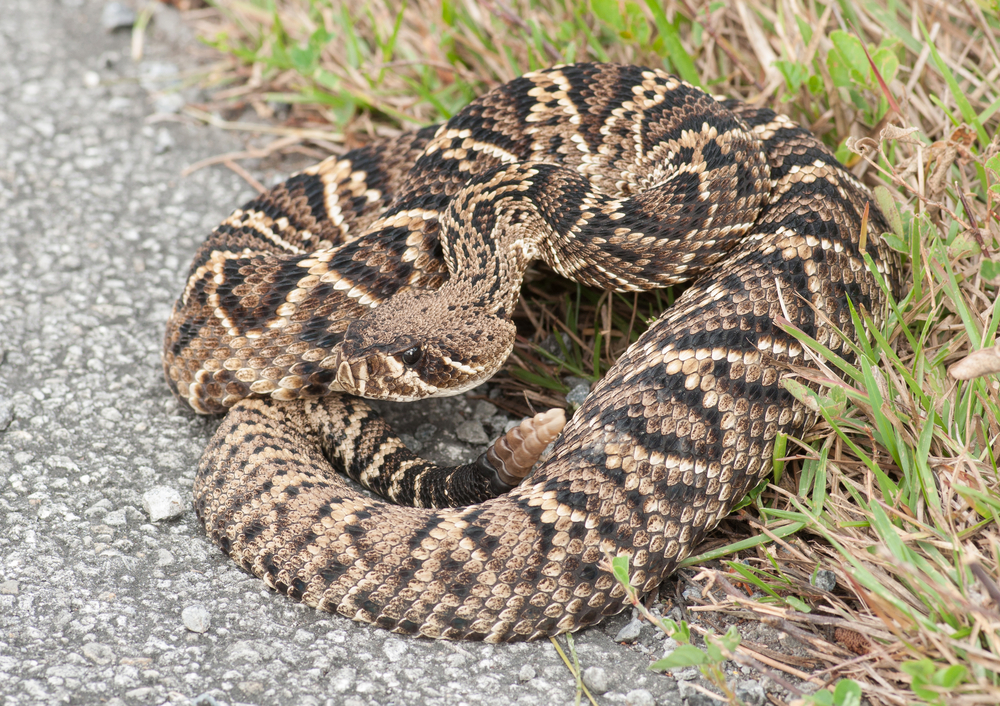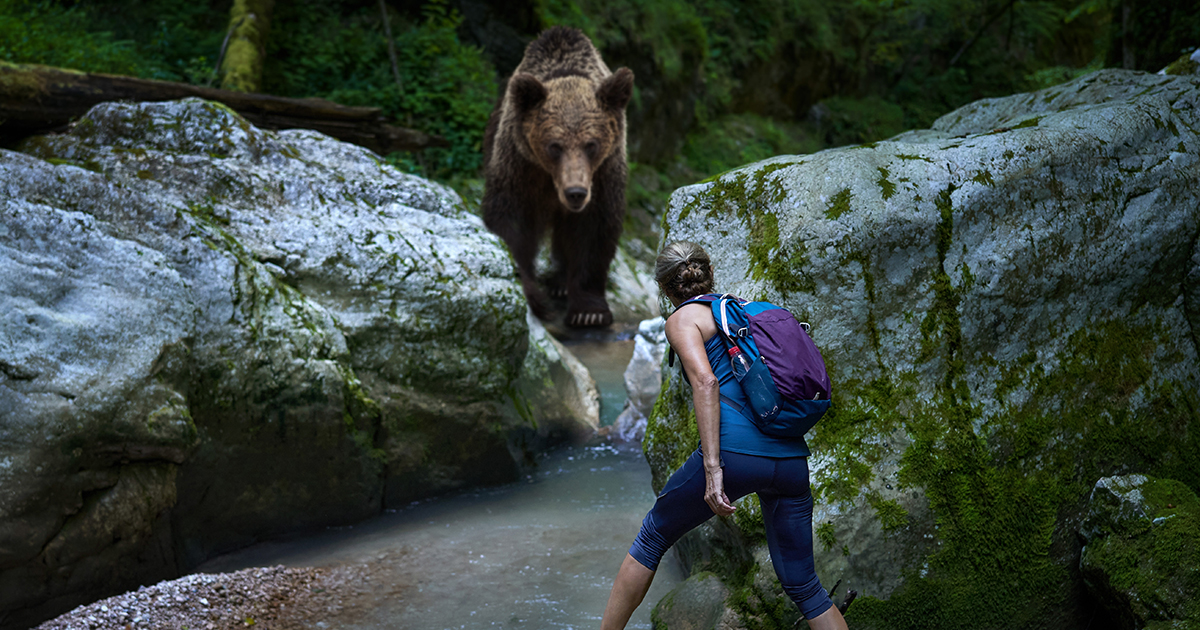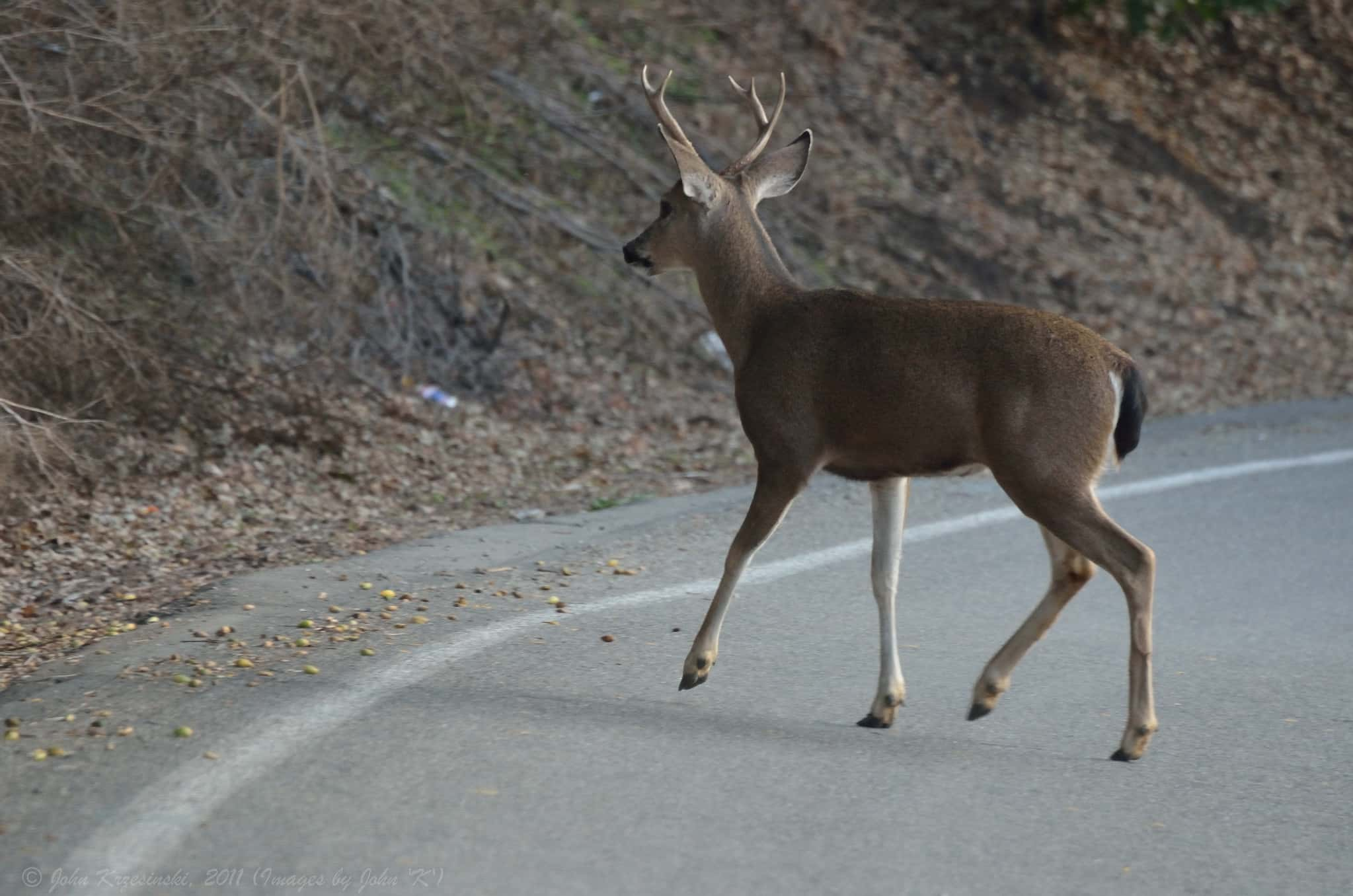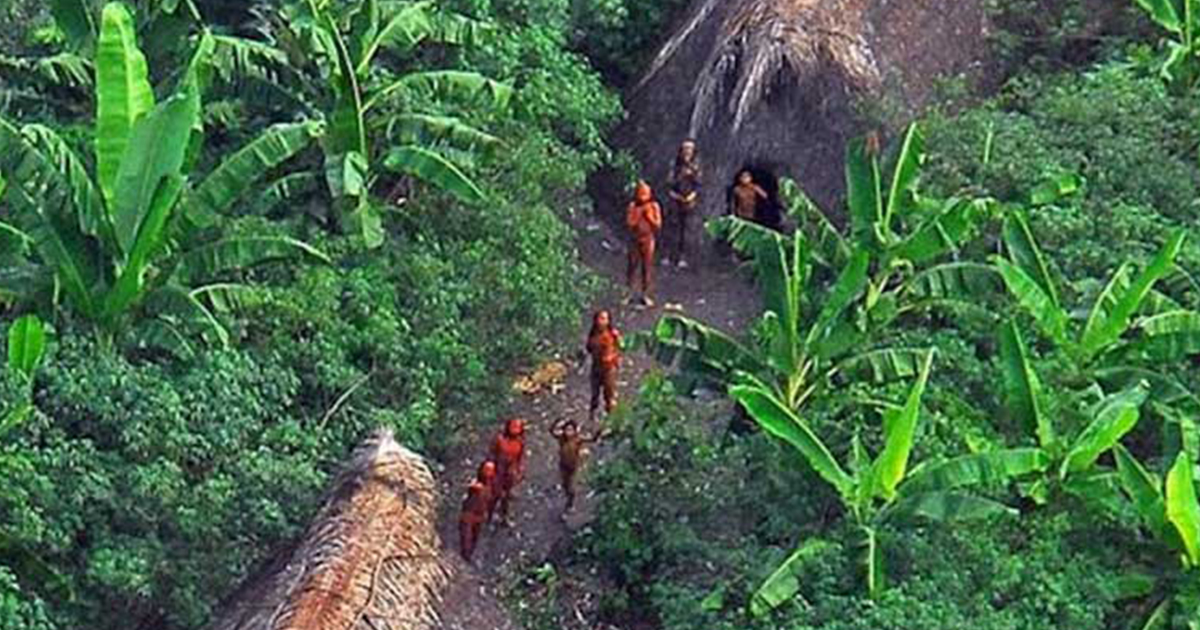Deadliest Wildlife in America
North America has some seriously deadly wildlife. While not all are particularly aggressive, if they happen to attack, your chances of survival are slim.
Here are 10 of America’s deadliest wildlife, and what to do if you encounter them.

Quick Stats
Before we dive into the details, these statistics will help gain some perspective.
According to a study done by the Berryman Institute, over 47,000 people annually in the US sought medical attention after being attacked or bitten by wildlife.
Approximately 8 people experience a fatal attack each year.
State Specific: Texas
Texas has been named the state with the most fatalities caused by wild animals.
According to the CDC, Texas tops the list with 520 fatalities caused by animals between 1999-2019, and an average of 26 fatalities each year.
State Specific: California & Florida
California comes in second with 299 fatalities in that 20-year span, and Florida comes in third with 247 fatalities caused by animals.
Now, lets find out which animals pose the biggest threat.
Spiders
Some of the deadliest species of spiders live in North America. Two of which are the notorious black widow, and the brown recluse.
 Konrad Summers, CC BY-SA 2.0, Wikimedia Commons
Konrad Summers, CC BY-SA 2.0, Wikimedia Commons
Spiders: Black Widow & Brown Recluse
The black widow venom is considered the second strongest of any spider. The venom of the brown recluse is necrotic, even though they are not particularly aggressive.
 Rosa Pineda, CC BY-SA 3.0, Wikimedia Commons
Rosa Pineda, CC BY-SA 3.0, Wikimedia Commons
Scorpions
A scorpion uses the stinger on the end of its tail to inject venom into unsuspecting enemies or predators.
 Shantanu Kuveskar, CC BY-SA 4.0, Wikimedia Commons
Shantanu Kuveskar, CC BY-SA 4.0, Wikimedia Commons
Scorpions: The Arizona Bark Scorpion
The Arizona Bark Scorpion has established itself as the most potent species of scorpion in the USA, and carries a potentially lethal sting.
In the 1980’s, there were over 800 deaths reported in Mexico as a direct result of the Bark scorpion.
 Andrew Meeds, CC BY 4.0, Wikimedia Commons
Andrew Meeds, CC BY 4.0, Wikimedia Commons
Bears
Bears are usually represented as cute and cuddly, but that couldn’t be farther from the truth. They are easily one of the most dangerous species in America.
Bears: Black, Brown & Polar
There are three species of bear native to North America, all of which have the capacity to be particularly dangerous: the black bear, brown bear and polar bear.
All of which will attack if they feel even the least bit threatened.
Wolves & Coyotes
Wolf attacks within North America are actually quite rare, but there has been an increase in recent years.
Coyotes are a different story.
 Henry, CC BY 2.0, Wikimedia Commons
Henry, CC BY 2.0, Wikimedia Commons
Coyotes
Coyotes, on the other hand, have been involved with numerous fatalities over the years. Small children are at the greatest risk, with numerous reports of coyotes attempting to snatch children under the age of 5.
 Tracie Hall, CC BY-SA 2.0, Wikimedia Commons
Tracie Hall, CC BY-SA 2.0, Wikimedia Commons
Wolves: The Gray Wolf
Weighing up to 90lbs, gray wolves hunt in packs of 40 or more. Over the years, many of them have become acclimated to larger human populations, resulting in more attacks.
 Andy Witchger, CC BY 2.0, Wikimedia Commons
Andy Witchger, CC BY 2.0, Wikimedia Commons
American Bison
The American Bison is the biggest land animal in the United States, standing at a whopping 6 feet and weighing 1.5 tons.
The American Bison rarely attack unless provoked, but when they do, its deadly.
 Jack Dykinga, Wikimedia Commons
Jack Dykinga, Wikimedia Commons
Alligators
Alligators will devour anything that they come across. Studies have found that the power generated by the jaws of an alligator surpasses any laboratory-measured bite of any animal.
Florida has approximately 1.5 million alligators—and they experience about 10 fatal attacks each year.
 cuatrok77, CC BY 2.0, Wikimedia Commons
cuatrok77, CC BY 2.0, Wikimedia Commons
Sharks
Shark attacks are also very common in Florida, as well as other coastal states. Not all bites are fatal, but they sure do cause a lot of pain and suffering.
All three of the main man-eating species of sharks can be found off the coast of North America.
Sharks: Great Whites, Bull, & Tiger
Every recorded fatality in California has been attributed to great white sharks. On the other hand, in Florida, bull sharks and tiger sharks carry out most attacks.
 Unknown Author, Wikimedia Commons
Unknown Author, Wikimedia Commons
Snakes
There are several species of venomous snakes within the USA.
Each year, there are an estimated 5 deaths per 8000 cases of venomous bites—this number would be much higher if anti-venom medication wasn’t readily available.
 Oliver Neuman, CC BY-SA 4.0, Wikimedia Commons
Oliver Neuman, CC BY-SA 4.0, Wikimedia Commons
The Coral Snake
The most venomous of all snakes within North America is the coral snake, a member of the cobra family. Its venom will cause paralysis of the respiratory system, leading to the suffocation of the victim..
 JoelAmaya, CC BY-SA 4.0, Wikimedia Commons
JoelAmaya, CC BY-SA 4.0, Wikimedia Commons
The Rattlesnake
The Rattlesnake is the most recognized species of snake and has a much more aggressive demeanor.
Diamondback rattlesnakes are larger in size, and have a venom that can cause intense pain and damage to body tissues.
 Gerald A. DeBoer, Shutterstock
Gerald A. DeBoer, Shutterstock
Deer
Deer may surprise you because they seem so innocent, but they are actually responsible for more fatalities than any other animal in the US.
Deer: Fatalities
Most fatal accidents involving deer happen when they cross the road and get hit by cars, resulting in catastrophic crashes and human fatalities.
Africanized Bees
More commonly known as killer bees, Africanized Bees attack in swarms, often with devastating results. They even chase their victims for up to a quarter of a mile.
One sting may not be fatal, but several stings certainly can.
 Carlos Eduardo Joos, CC BY 2.0, Wikimedia Commons
Carlos Eduardo Joos, CC BY 2.0, Wikimedia Commons
Africanized Bees: Fatalities
The number of Africanized Bees is increasing in the United States, leading to an increase in fatalities; annually, 40 to 50 people pass from allergic reactions following stings.
 Scott Bauer, USDA Agricultural Research Service, Wikimedia Commons
Scott Bauer, USDA Agricultural Research Service, Wikimedia Commons
Cougars
Although cougar attacks on humans can be rare, they are not unheard of—and their attacks are absolutely brutal.
 National Park Service from USA, Wikimedia Commons
National Park Service from USA, Wikimedia Commons
Cougar Attacks
In the past few decades there have been over 100 cougar attacks in the US, 27 of which were fatal. Unfortunately, many of them were children.
 National Park Service, Wikimedia Commons
National Park Service, Wikimedia Commons
Livestock
Believe it or not, farm livestock is one of the most dangerous class of animals in the entire country. From a horse’s powerful kick to a goat’s sharp horns, farm animals have been known to cause quite a stir.
But those aren’t the worst ones.
Cows
Surprisingly, cows—who are typically slow and docile—can be dangerous if they all begin to stampede at the same time. Their sheer body weight makes them dangerous.
Hikers and cyclists whom exercise in the countryside can attest to the danger of spooking a herd of cattle.
Humans
And finally, the most dangerous being in the United States is the human. While not classified as wildlife, humans still post a significant threat to each other.
There are over 3 million human fatalities each year in the US, caused by other humans.
States With Least Attacks
The states ranking last with the least number of fatalities caused by animals were Delaware, North Dakota, and Rhode Island, all with zero fatalities caused by animals recorded over the last 20 years.
Deadliest Animal of All
The brown bear can undoubtedly be classified as the deadliest creature in North America due to its fiercely territorial nature.
If provoked, brown bears will fight till the very end.
Second Deadliest
The second deadliest animal in the US is a tie between sharks and snakes—with most snake-related fatalities being from rattlesnake bites.
How To Avoid Wildlife Attacks: Bears
When facing a black bear, it is advised that you make yourself as big as possible and make lots of noise.
But when facing a brown bear, it is advised you do the opposite: stay as still as possible and slowly move away from the bear, without making any sudden moves.
How To Avoid Wildlife Attacks: Bears
Knowing the difference between a black bear and a brown bear can save your life. It is also advised that you carry bear spray when you plan to visit areas where bears are present.
How To Avoid Wildlife Attacks: Sharks
Most shark attacks happen unexpectedly, so it is tough to be prepared. But if you find yourself being attacked by a shark, it is advised that you immediately attack back—and with as much force as you can possibly manage.
Use anything you have as a tool to help you fight. Target the eyes, gills and nose.
 NOAA Ocean Exploration, Flickr
NOAA Ocean Exploration, Flickr
How To Avoid Wildlife Attacks: Snakes
In the event of being bitten by a venomous snake, it is advised that you keep calm to avoid the spread of the venom throughout your body.
Keep the bite below the heart level, clean it with warm, soapy water, and cover with a clean dressing while waiting for EMS.
How To Avoid Wildlife Attacks: Snakes
Contrary to popular belief, sucking out the venom is not advised.
Remembering the colors and shape of the snake can be vital to identifying the correct treatment quickly and effectively.
Final Thoughts
While wildlife attacks are not as common as people may think, when they do happen, they can be seriously detrimental.
Most wildlife attacks have the potential to end in fatalities. It is important to be aware of your surroundings, and be prepared for possible attacks so that medical help can be reached within a reasonable time frame.
Source: 1


























